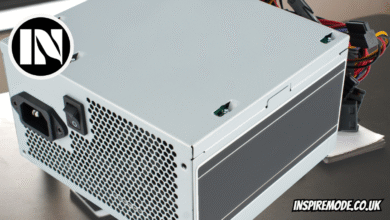192.1y8.1.1 Router Login & Configuration Guide: Access, Fix & Secure Your Network

Introduction
192.1y8.1.1 When managing your home or office network, accessing your router’s admin panel is often the first step toward customization, troubleshooting, and securing your internet connection. Many users search for IP addresses like 192.1y8.1.1 to log into their router’s settings, but this particular sequence is unusual and raises an important question: is it a valid IP address? Understanding this can save you from hours of confusion and connectivity issues 192.1y8.1.1.
Most routers use specific private IP addresses—commonly in the range of 192.168.x.x—to let users configure settings. Typographical errors, such as mistyping “192.168” as “192.1y8,” can lead to failed attempts at accessing the router’s control panel. This guide will walk you through the reality of the 192.1y8.1.1 IP, how to find your actual router IP, steps to log in correctly, and what to do once inside the router interface. We’ll also cover security tips to ensure your network remains safe and efficient 192.1y8.1.1.
By the end of this article, you will clearly understand why 192.1y8.1.1 is not a standard router IP, how to find and use your real router IP, and how to make the most out of your router’s configuration page to optimize your network’s performance and security 192.1y8.1.1.
Understanding 192.1y8.1.1: Is It a Valid IP Address?
IP addresses for routers typically follow strict numerical patterns within specific private IP ranges. The most common private IP ranges include 192.168.x.x, 10.x.x.x, and 172.16.x.x to 172.31.x.x. The address 192.1y8.1.1, however, contains an alphabetic character ‘y’—making it invalid as an IP address since IP addresses only consist of numbers separated by dots.
This kind of mistake is often the result of typographical errors or misreading the router’s IP address printed on its label or documentation. The most common router default IP address is 192.168.1.1, used by many popular router brands such as Linksys, TP-Link, and Netgear. Another frequent alternative is 192.168.0.1.
Trying to access 192.1y8.1.1 in a web browser will lead to errors because the system won’t recognize it as a legitimate network address. This can cause frustration for users who assume the IP must be correct based on what they’ve read or seen. Instead, it’s essential to verify the correct IP address assigned to your router before proceeding to the login stage 192.1y8.1.1.
Knowing the difference between valid and invalid IP addresses is crucial not only for accessing your router but also for network troubleshooting and avoiding potential security issues that arise from misconfigured devices 192.1y8.1.1.
How to Find Your Correct Router IP Address
To avoid mistakes like entering 192.1y8.1.1, it’s important to identify your router’s actual IP address. Thankfully, this is straightforward and can be done on various devices including Windows, Mac, Android, and iOS 192.1y8.1.1.
On Windows, open the Command Prompt and type ipconfig, then press Enter. Look for the “Default Gateway” under your network connection—it usually shows the router’s IP, commonly 192.168.1.1 or 192.168.0.1. On a Mac, open the Terminal and type netstat -nr | grep default or check the “Network” section in System Preferences 192.1y8.1.1.
For mobile devices, the IP can be found under WiFi settings. On Android, tap on your connected network and check the “Gateway” address. On iOS, tap the “i” icon next to your network name and look for the router address listed 192.1y8.1.1.
If you’re unsure or can’t access the device, you can also check the router itself—most routers have a sticker on the back or underside that shows the default IP address, along with default login credentials 192.1y8.1.1.
Lastly, many internet service providers offer apps or online portals where you can view or even change your router’s IP address. This multi-method approach ensures you always know the correct address before trying to log in 192.1y8.1.1.
Logging Into Your Router Admin Panel (Correct IP Example: 192.168.1.1)
Once you have the correct IP address, logging into your router’s admin panel is the next crucial step. Open any web browser and type the IP address into the address bar (for example, http://192.168.1.1) and press Enter. This action directs you to the router’s login page 192.1y8.1.1.
Most routers require a username and password. Default credentials vary by manufacturer but are often “admin” for both fields or “admin” for username and “password” for the password. You can find these details in your router’s manual or on the sticker mentioned earlier. If you’ve changed the credentials before and forgotten them, you may need to reset the router to factory settings by holding down a small button on the back for about 10-30 seconds 192.1y8.1.1.
Be cautious when logging in—avoid using public WiFi to access your router’s settings for security reasons. Once logged in, you will be able to access all router configurations, including network name, password, firewall settings, and more 192.1y8.1.1.
If the login page does not load, ensure your device is connected to the router’s network and the IP address is correct. Browser cache or firewall settings can sometimes block the page, so trying another browser or device can help troubleshoot 192.1y8.1.1.
Router Configuration After Login
After accessing the admin panel, you can start tailoring your network to fit your needs. First, change your WiFi network name (SSID) and password to something secure and memorable. Avoid common names or default passwords that hackers can easily guess.
You might also want to set up guest networks to allow visitors internet access without exposing your main network devices. Parental controls are another useful feature if you want to restrict access to certain websites or limit internet time for specific devices.
Firmware updates are critical—they patch security vulnerabilities and improve router performance. Most routers allow you to check for updates directly in the admin interface and apply them with a few clicks.
Security settings such as enabling WPA3 encryption (if available), disabling WPS, and setting up a firewall help protect your network from unauthorized access and cyber threats. Once your changes are saved, it’s a good idea to reboot your router to apply settings fully.
Regularly reviewing and updating these configurations keeps your network fast, secure, and stable.
Conclusion
The IP address 192.1y8.1.1 is not a valid router IP and likely results from a typographical error or misunderstanding. Correctly identifying your router’s actual IP address—usually something like 192.168.1.1—is essential for managing your network settings and troubleshooting connectivity issues. By following simple steps to find the right IP and logging into the admin panel, you can customize your network name, password, security settings, and more.
Keeping your router firmware up to date and using strong login credentials safeguards your internet connection against threats. Understanding how your router works empowers you to maintain a faster, more reliable, and secure home or office network.
Also Read: article submission sites



